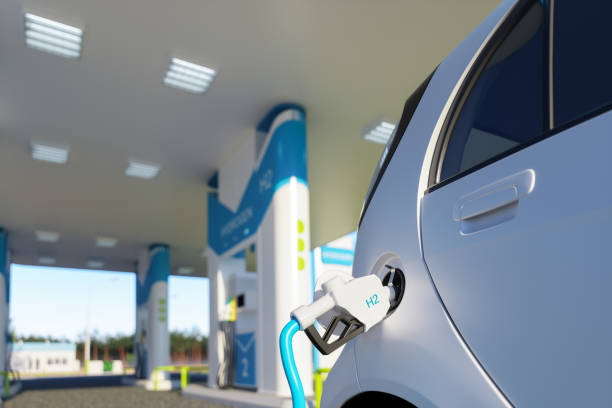The Electric Vehicle Market Is Changing
In recent years, electric vehicles have seen rapid advancements in technology, pricing, and availability. As more automakers enter the market and government policies evolve, drivers now have more choices than ever before. Here’s a closer look at what’s driving the shift — and what it means for future buyers.

How Are New Battery Technologies Changing Electric Vehicles?
Battery technology stands at the forefront of the EV revolution, with significant advancements reshaping what’s possible. The industry is rapidly moving beyond traditional lithium-ion batteries toward solid-state alternatives that promise greater energy density, faster charging, and improved safety profiles. These next-generation batteries could potentially double driving ranges while reducing charging times to under 15 minutes for an 80% charge.
Manufacturers are also exploring silicon anodes, which can store up to ten times more energy than traditional graphite anodes. Additionally, battery management systems are becoming more sophisticated, using artificial intelligence to optimize performance and extend battery lifespan. These improvements address one of the primary consumer concerns about EVs—range anxiety—while simultaneously reducing the overall environmental footprint through more sustainable materials and manufacturing processes.
Which New Automakers Are Disrupting the Electric Vehicle Industry?
The competitive landscape has expanded dramatically beyond Tesla’s early dominance. Traditional automotive giants like Ford, General Motors, and Volkswagen have committed billions to electrification strategies, but it’s the new entrants that are particularly reshaping market dynamics.
Chinese manufacturers including BYD, NIO, and Xpeng are gaining global market share with competitive pricing and innovative features. Meanwhile, startups like Rivian and Lucid Motors are targeting premium segments with vehicles that combine luxury with cutting-edge technology. Even technology companies like Sony and Apple have announced intentions to enter the EV market, bringing their expertise in consumer electronics and user experience design.
This intensified competition is driving innovation while putting downward pressure on prices, creating a more diverse array of options for consumers across different price points and vehicle categories. From compact urban runabouts to electric pickup trucks and luxury sedans, the variety of EVs available continues to expand rapidly.
How Are Government Policies Accelerating EV Adoption?
Policy frameworks across the United States and globally are increasingly favorable toward electric transportation. The Inflation Reduction Act of 2022 represented a significant shift in U.S. policy, introducing restructured tax credits of up to $7,500 for qualifying new electric vehicles and $4,000 for used EVs. These incentives are now applied at the point of sale rather than as tax credits, making the savings immediately accessible to consumers.
Beyond federal policy, many states offer additional incentives, including rebates, tax exemptions, and access to HOV lanes regardless of occupancy. California’s mandate that all new vehicles sold must be zero-emission by 2035 has been adopted by several other states, creating a powerful market signal for manufacturers.
Globally, countries like Norway, which aims to end sales of combustion engine cars by 2025, are setting even more ambitious targets. These policy frameworks create predictable market conditions that encourage manufacturer investment in electric technology while making EVs more financially attractive to consumers.
What Infrastructure Developments Are Supporting Electric Mobility?
The charging infrastructure landscape is evolving rapidly to support growing EV adoption. The U.S. National Electric Vehicle Infrastructure Formula Program is allocating $5 billion to states for building charging networks along highway corridors, addressing the critical “range confidence” issue for potential buyers.
Technological advances in charging are equally important. The deployment of 350kW ultra-fast chargers can add hundreds of miles of range in just 15-20 minutes, while wireless charging technology is beginning to emerge as a convenient alternative to plugging in. Smart charging capabilities enable users to schedule charging for off-peak hours, reducing costs and grid strain.
Innovative approaches like battery swapping stations, pioneered by companies like NIO in China, offer another solution to charging times by allowing drivers to exchange depleted batteries for fully charged ones in minutes. Meanwhile, vehicle-to-grid technology is turning EVs into mobile energy storage units that can support grid stability during peak demand periods.
How Are Electric Vehicle Price Points Evolving for American Consumers?
Perhaps the most significant market shift is occurring in pricing and affordability. While early EVs often carried premium price tags, increased competition and manufacturing scale are driving costs down. Several manufacturers now offer electric models starting under $30,000 after incentives, bringing EVs within reach of middle-income households.
Battery costs, which represent approximately 30-40% of an electric vehicle’s total cost, have fallen by more than 90% over the past decade. Industry analysts project this trend will continue, with EVs reaching price parity with comparable combustion vehicles by 2025-2027 without incentives. This economic tipping point could dramatically accelerate adoption rates.
| Electric Vehicle Model | Starting Price (Before Incentives) | Est. Range | Federal Tax Credit Eligibility |
|---|---|---|---|
| Chevrolet Bolt EV | $26,500 | 259 miles | Up to $7,500 |
| Nissan Leaf | $28,040 | 149-212 miles | Up to $7,500 |
| Tesla Model 3 | $38,990 | 272-333 miles | Partial eligibility |
| Ford F-150 Lightning | $49,995 | 230-320 miles | Up to $7,500 |
| Hyundai IONIQ 5 | $41,450 | 220-303 miles | Up to $7,500 |
| Rivian R1T | $73,000 | 314-400+ miles | Partial eligibility |
Prices, rates, or cost estimates mentioned in this article are based on the latest available information but may change over time. Independent research is advised before making financial decisions.
What Do These Changes Mean for Prospective Electric Vehicle Buyers?
For consumers considering an electric vehicle purchase, today’s market offers unprecedented choice across virtually all vehicle categories. The combination of expanding model options, falling prices, and generous incentives creates favorable conditions for making the switch to electric.
However, buyers should consider several factors beyond initial purchase price. Total cost of ownership often favors EVs due to lower maintenance requirements and energy costs—electricity generally costs less per mile than gasoline. Home charging installation expenses should be factored into upfront costs, though many utilities offer incentives to offset this investment.
Prospective buyers should also evaluate their driving patterns against vehicle range specifications, local charging infrastructure availability, and climate conditions which can affect battery performance. With rapid technological improvements, leasing might be worth considering for those concerned about future-proofing their purchase.
As the market continues its transformation, consumers who do their research will find increasingly compelling electric options that align with their needs and budgets, supported by an expanding ecosystem of charging infrastructure and services designed to make the electric driving experience seamless and convenient.




